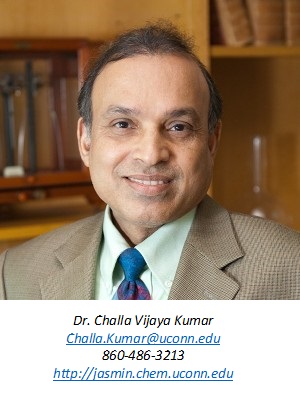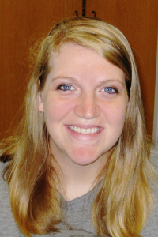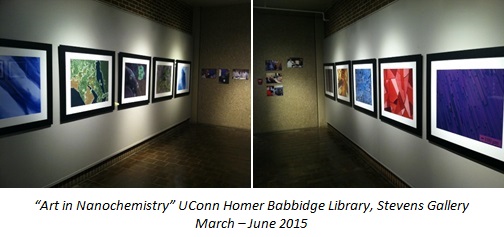Challa Vijaya Kumar: bringing edible and artistic chemistry to the community
 Dr. Challa Vijaya Kumar, a professor at the University of Connecticut, has spent his life investigating chemistry and trying to find ways to apply it to common problems. Earning his doctorate degree from the Indian Institute for Technology (Kanpur), he went on to complete a postdoctoral study at the University of Notre Dame where he examined fast dynamics of excited states at the Radiation Laboratory. He then accepted a research fellow position at Columbia University in New York City under Drs. Jackie Barton and Nicholas Turro. There, he discovered game-changing information about the electron transportation along the DNA backbone. Since then, he has been a professor at the University of Connecticut where he runs a research lab and directs graduate students in their advanced research studies.
Dr. Challa Vijaya Kumar, a professor at the University of Connecticut, has spent his life investigating chemistry and trying to find ways to apply it to common problems. Earning his doctorate degree from the Indian Institute for Technology (Kanpur), he went on to complete a postdoctoral study at the University of Notre Dame where he examined fast dynamics of excited states at the Radiation Laboratory. He then accepted a research fellow position at Columbia University in New York City under Drs. Jackie Barton and Nicholas Turro. There, he discovered game-changing information about the electron transportation along the DNA backbone. Since then, he has been a professor at the University of Connecticut where he runs a research lab and directs graduate students in their advanced research studies.
Recently, his research has focused on “edible” solutions to many problems, such as solar cell materials, light harvesting antennas for solar energy, and non-toxic nanoparticles for imaging and medical applications. “Edible”, a term he uses to describe his passion for non-toxic materials, refers to the biologically friendly makeup of his research. He says that in an ideal world, when a person is finished using an object, the material should be safe to be consumed by bacteria, viruses, plants or animals with no adverse effects.This is the goal that has driven his research into protein-based solar cells, protein- and lipid-based light emitting diodes, protein-based imaging agents and biocompatible graphene materials.

One particularly interesting project to come from his“edible” chemistry goal is the invention of protein nanoparticles that glow under UV or visible light (GlowDots). These particles are composed of an edible protein, as the name would suggest, and can be tuned for their size, composition, surface chemistry and emission properties. In particular, his PhD student Bobbi Stromer (photo below) developed these into commercial products. GlowDots enter into different cell lines, they are excellent cellular imaging agents and hold many advantages over other imaging agents. Advantages of GlowDots include their high brightness, biocompatibility, biodegradability, ease of making and low cost. They received high praise from both the academic and industrial sectors, and can now be easily accessed by researchers worldwide via the Kerafast platform.
 In addition to Dr. Kumar’s desire to solve problems with green solutions, he is also passionate about showing the world that chemistry is much more than just cold glassware and rigid calculations, and that there is art in chemistry and ‘Chemists are also Artists’. To demonstrate this, he along with his PhD student Bobbi put together an art show that was displayed at the University of Connecticut main library during the Spring 2015 semester. The show featured 24 framed microscopic pictures of different materials from his own lab and other labs around the world. Each picture, with vivid colors and sharp contrasting lines, demonstrates how different and beautiful science can be when one looks close enough; that is, when objects are expanded a billion-times over.
In addition to Dr. Kumar’s desire to solve problems with green solutions, he is also passionate about showing the world that chemistry is much more than just cold glassware and rigid calculations, and that there is art in chemistry and ‘Chemists are also Artists’. To demonstrate this, he along with his PhD student Bobbi put together an art show that was displayed at the University of Connecticut main library during the Spring 2015 semester. The show featured 24 framed microscopic pictures of different materials from his own lab and other labs around the world. Each picture, with vivid colors and sharp contrasting lines, demonstrates how different and beautiful science can be when one looks close enough; that is, when objects are expanded a billion-times over.
The art exhibit has since been featured at the University of Connecticut Health Center and will be soon displayed in the Bradley International Airport in Hartford, Connecticut. Individual prints and a calendar featuring many of the pictures from the display can be purchased from the Kumar Group at the University of Connecticut (http:/jasmin.chem.uconn.edu, 860-486-6557).
Learn more about the Kumar lab’s GlowDot protein-based fluorescent nanoparticles >>




